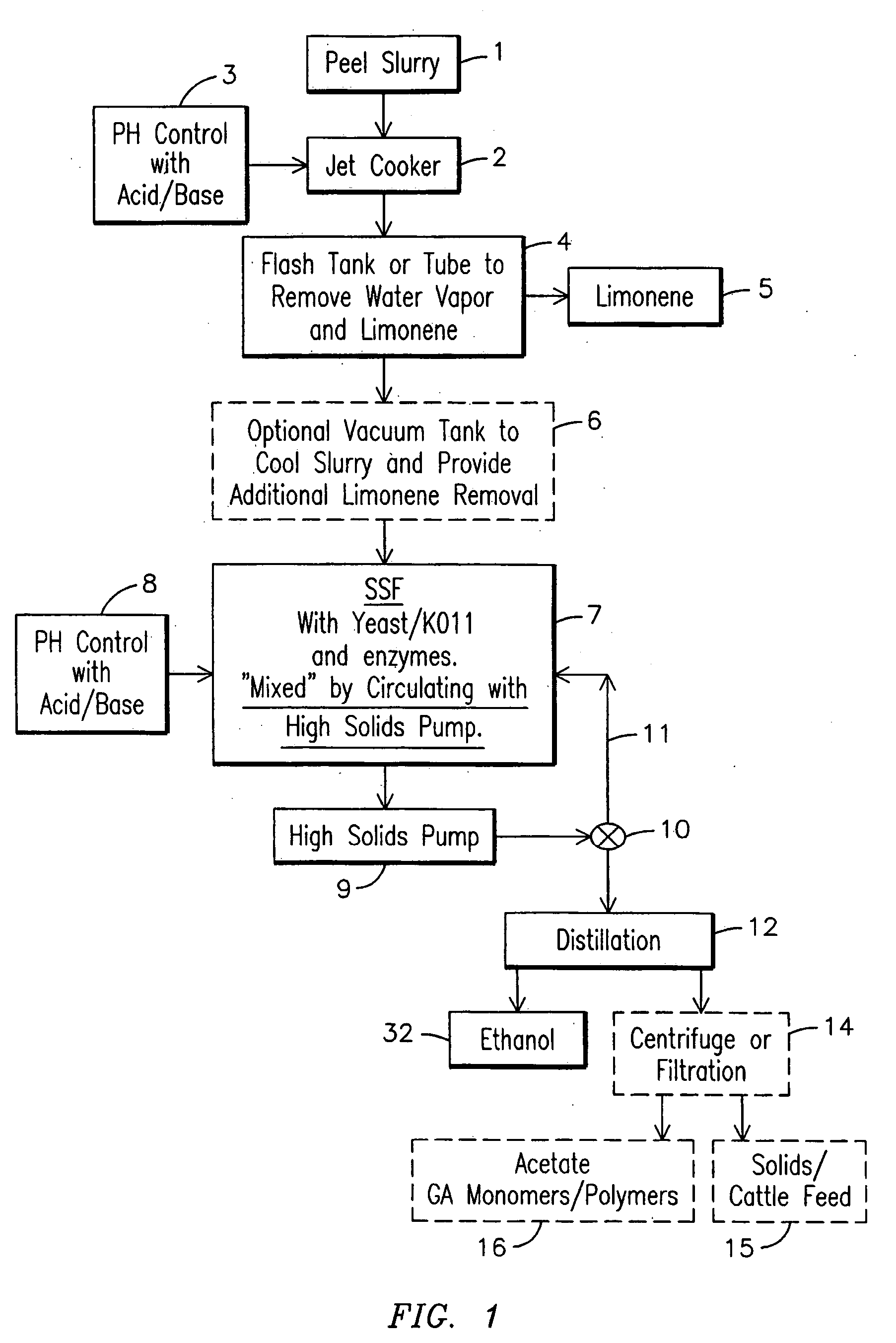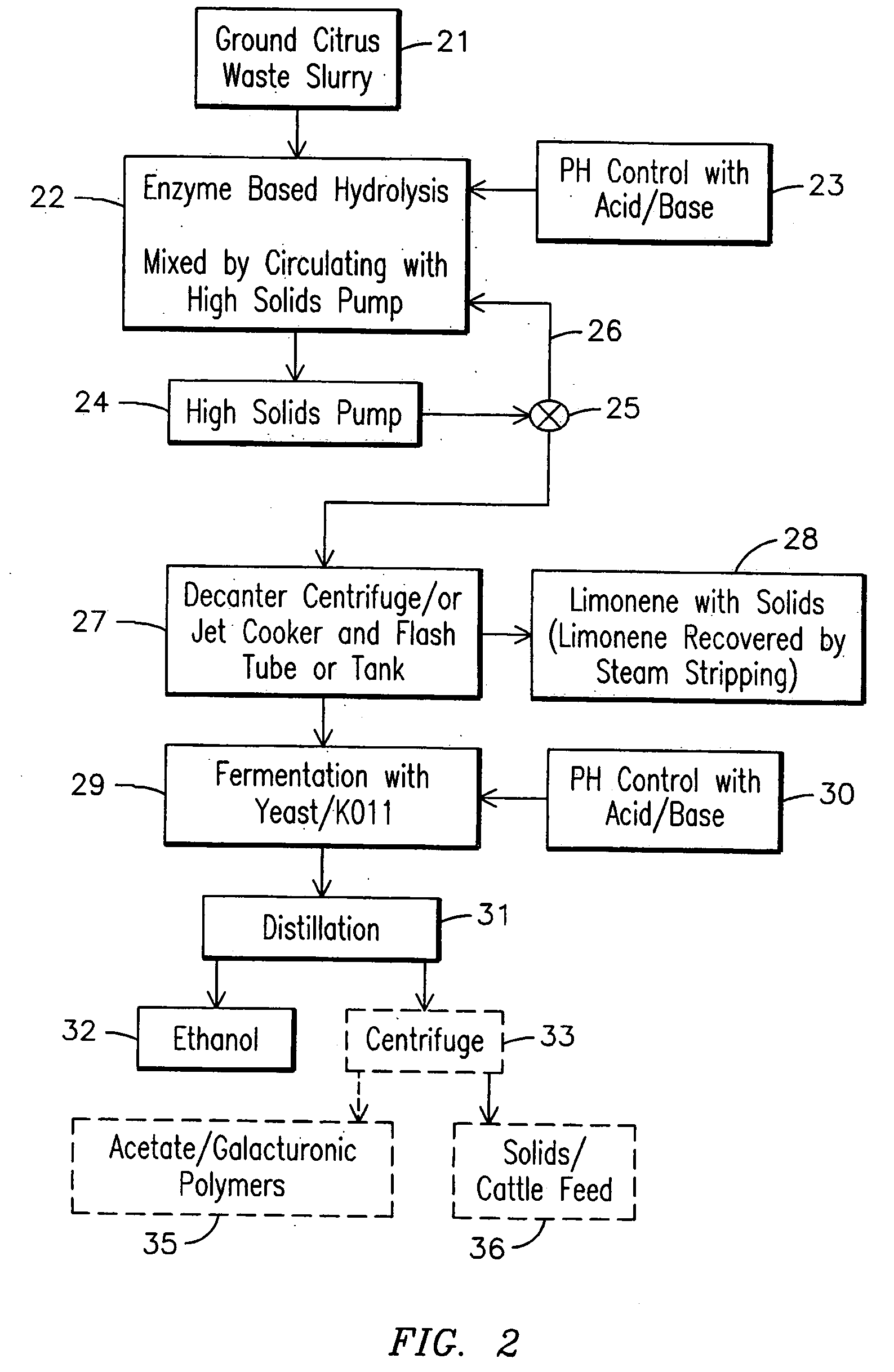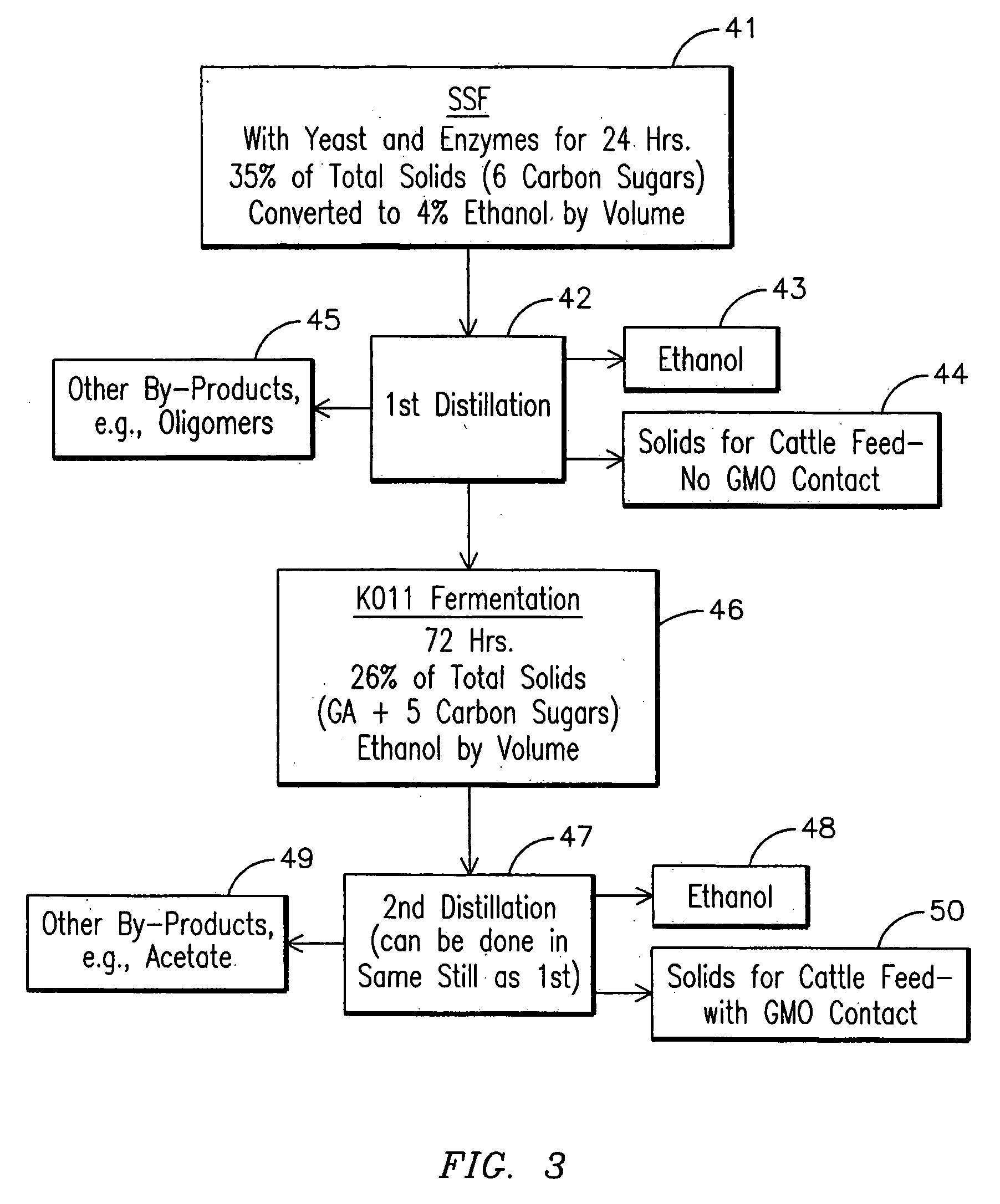Ethanol production from citrus processing waste
a technology of citrus waste and ethanol, which is applied in the field of citrus waste processing, can solve the problems of not having enough value to cover the production and transportation costs associated, the amount of citrus waste, and the mainly composed of peels, membranes and seeds, so as to reduce the pollution of limonene, and increase the recovery of limonene
- Summary
- Abstract
- Description
- Claims
- Application Information
AI Technical Summary
Benefits of technology
Problems solved by technology
Method used
Image
Examples
Embodiment Construction
[0027] For purposes of describing the preferred embodiment, the terminology used in reference to the numbered components in the drawings is as follows: [0028]1. Ground citrus waste slurry [0029]2. Jet cooker [0030]3. pH control [0031]4. Flash tube or tank [0032]5. Limonene [0033]6. Vacuum tank [0034]7. Fermentation mixing tank [0035]8. pH control [0036]9. High solids pump [0037]10. Valve [0038]11. Return line [0039]12. Distillation [0040]13. Ethanol [0041]14. Centrifuge [0042]15. Solids / cattle feed [0043]16. Acetate, 5C sugars, GA polymers [0044]21. Ground citrus waste slurry [0045]22. Enzyme based hydrolysis [0046]23. pH control [0047]24. High solids pump [0048]25. Valve [0049]26. Return line [0050]27. Centrifuge [0051]28. Limonene [0052]29. Fermentation tank [0053]30. pH control [0054]31. Distillation [0055]32. Ethanol [0056]33. Centrifuge [0057]34. Solids / cattle feed [0058]35. Acetate / GA polymers / 5C sugars [0059]41. Yeast fermentation tank [0060]42. 1st Distillation [0061]43. Eth...
PUM
 Login to View More
Login to View More Abstract
Description
Claims
Application Information
 Login to View More
Login to View More - R&D
- Intellectual Property
- Life Sciences
- Materials
- Tech Scout
- Unparalleled Data Quality
- Higher Quality Content
- 60% Fewer Hallucinations
Browse by: Latest US Patents, China's latest patents, Technical Efficacy Thesaurus, Application Domain, Technology Topic, Popular Technical Reports.
© 2025 PatSnap. All rights reserved.Legal|Privacy policy|Modern Slavery Act Transparency Statement|Sitemap|About US| Contact US: help@patsnap.com



